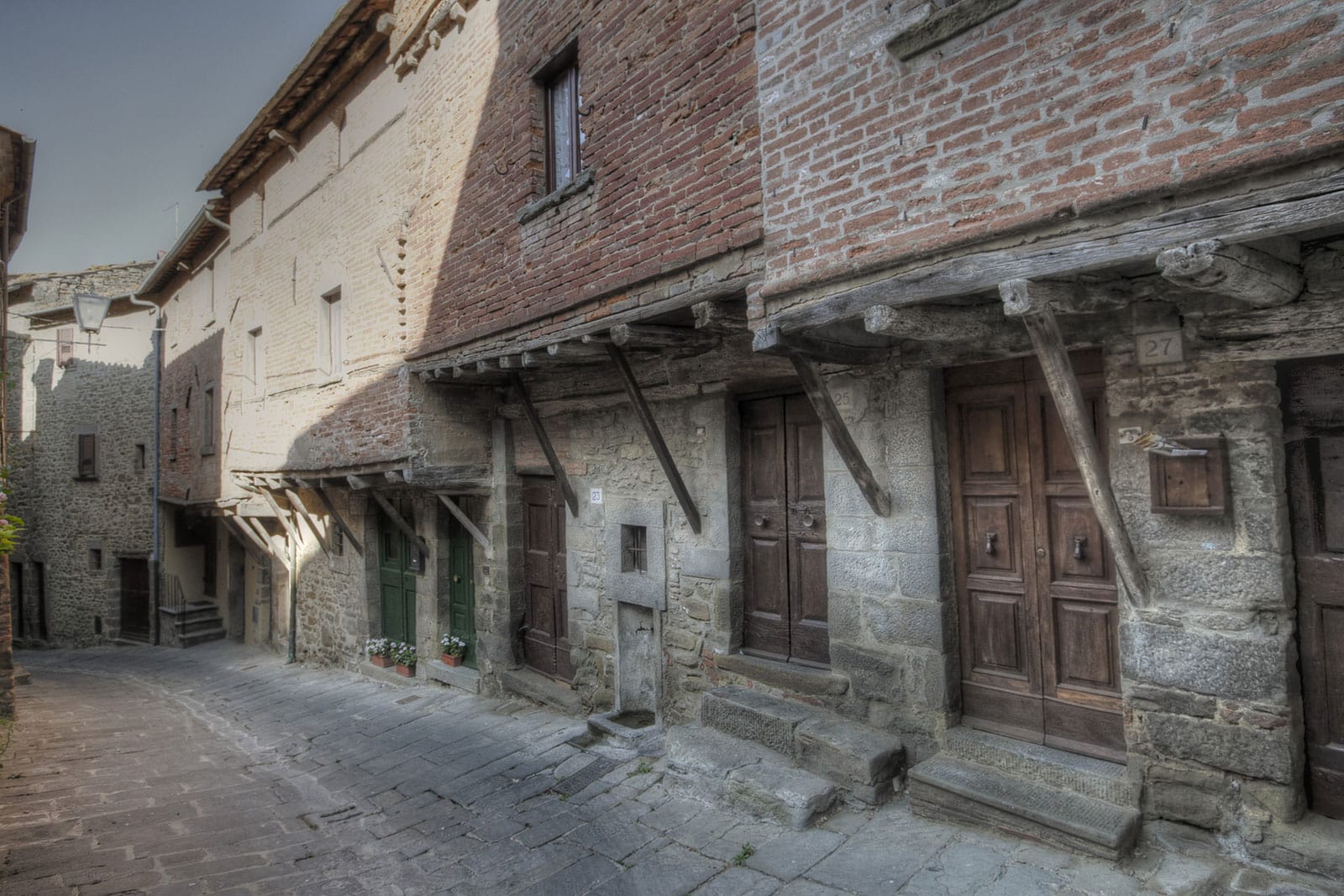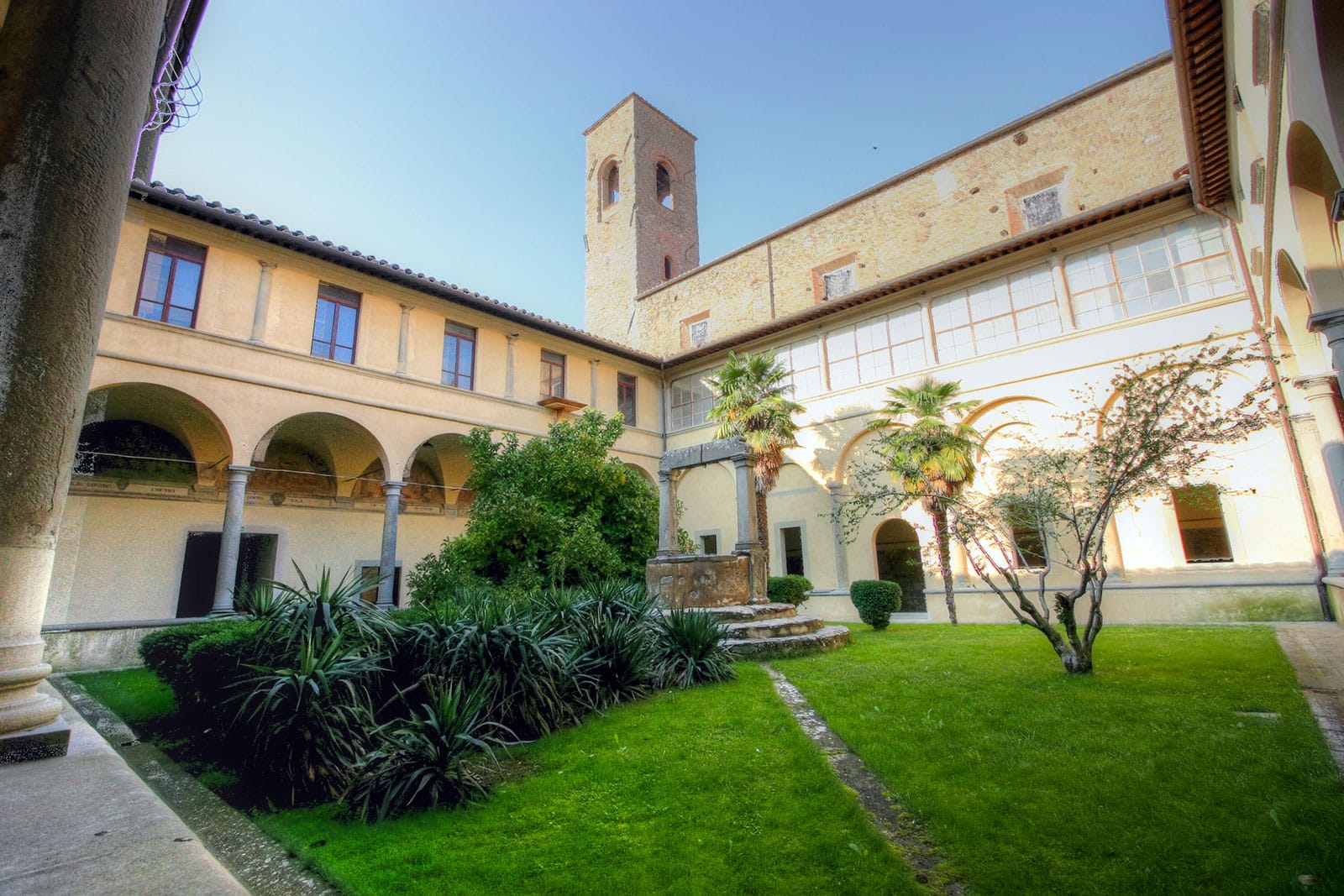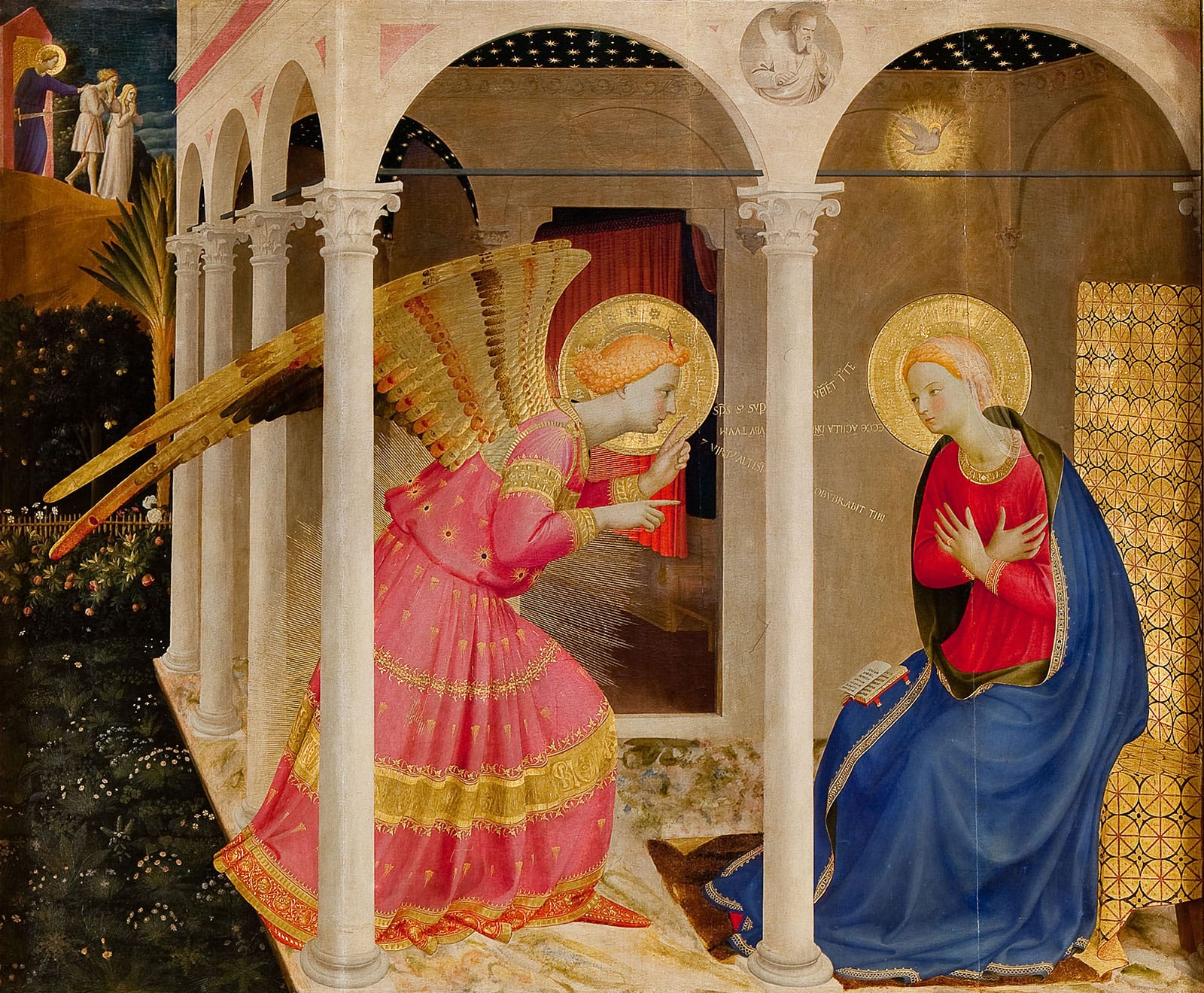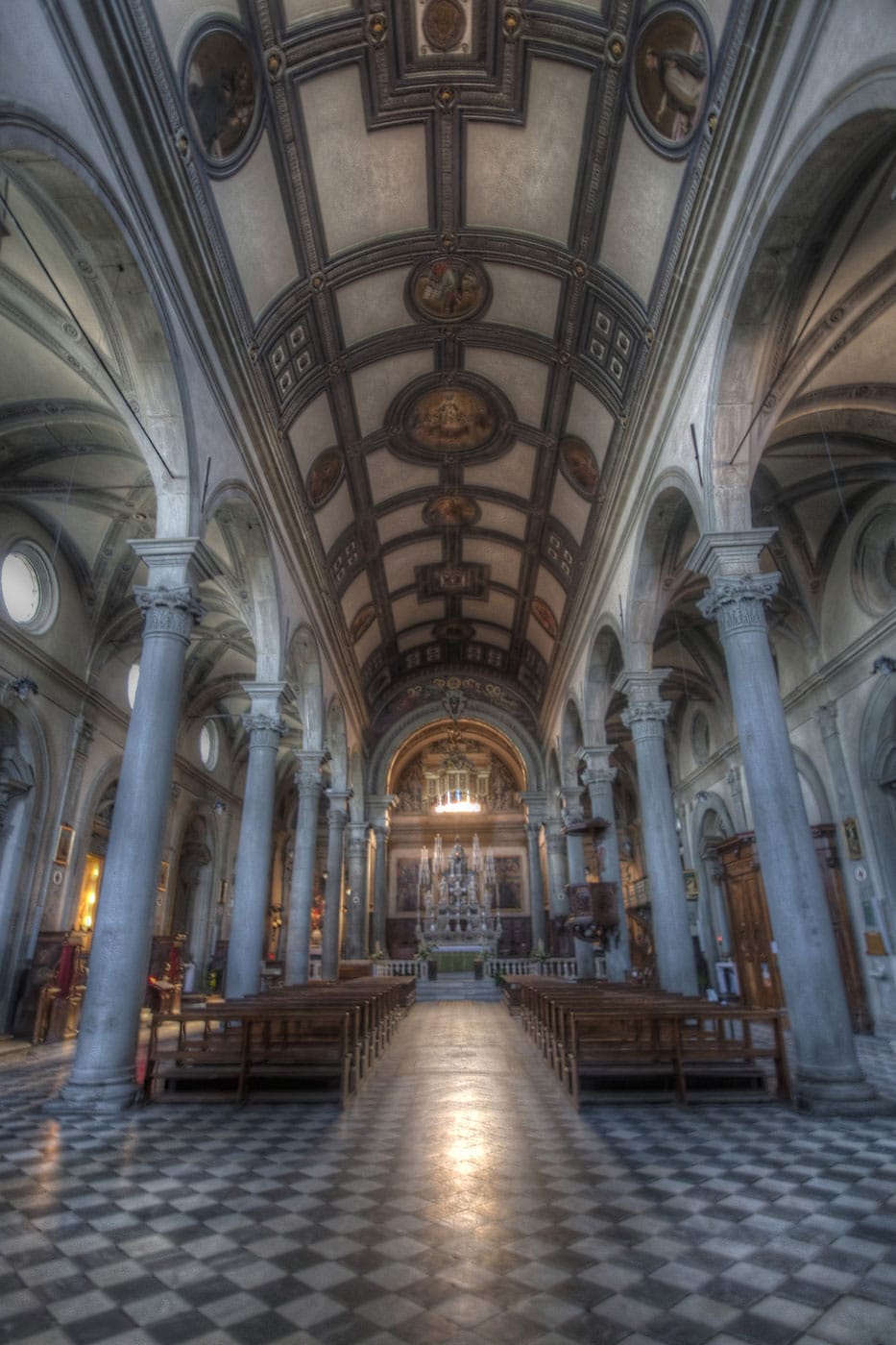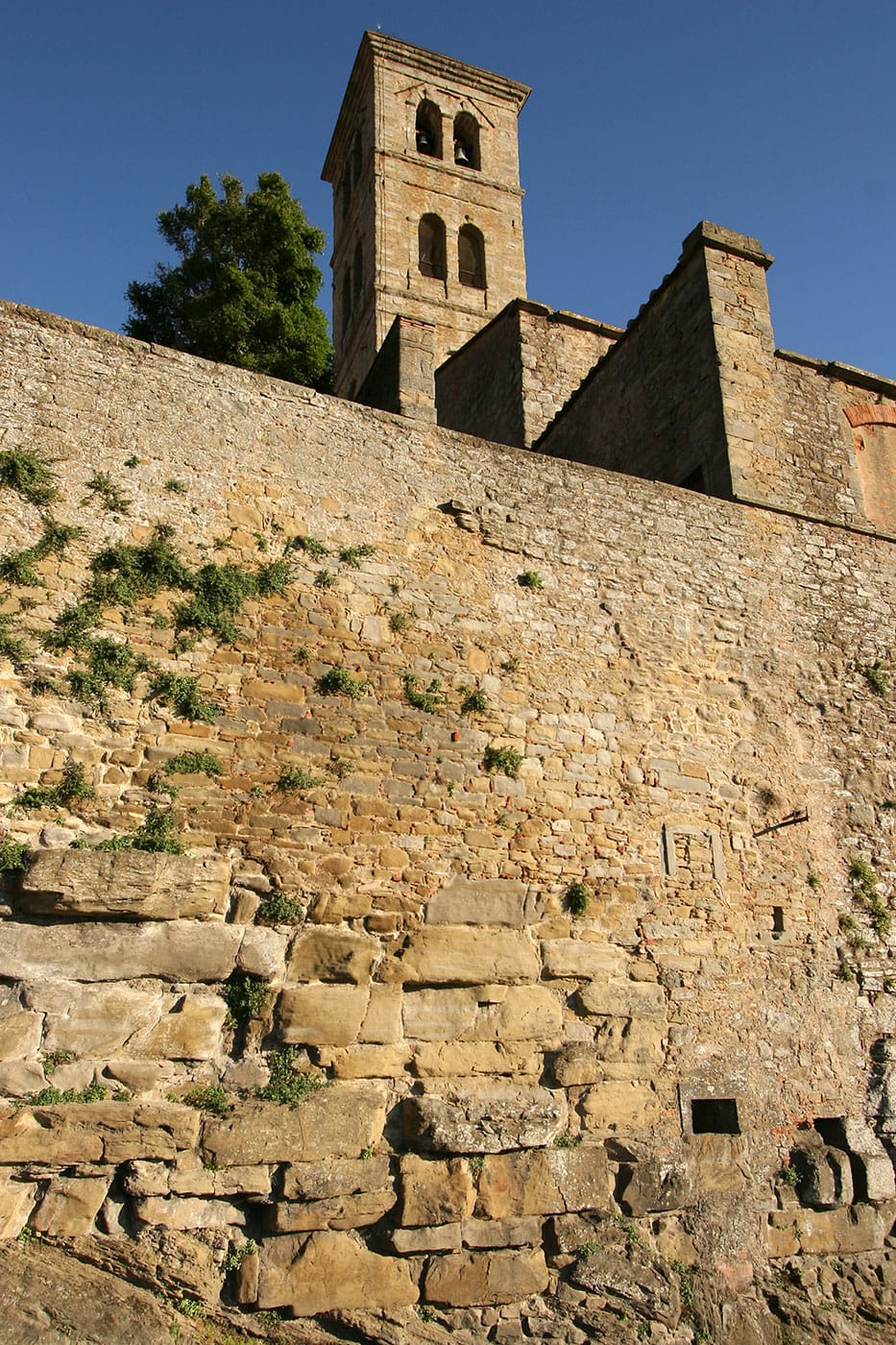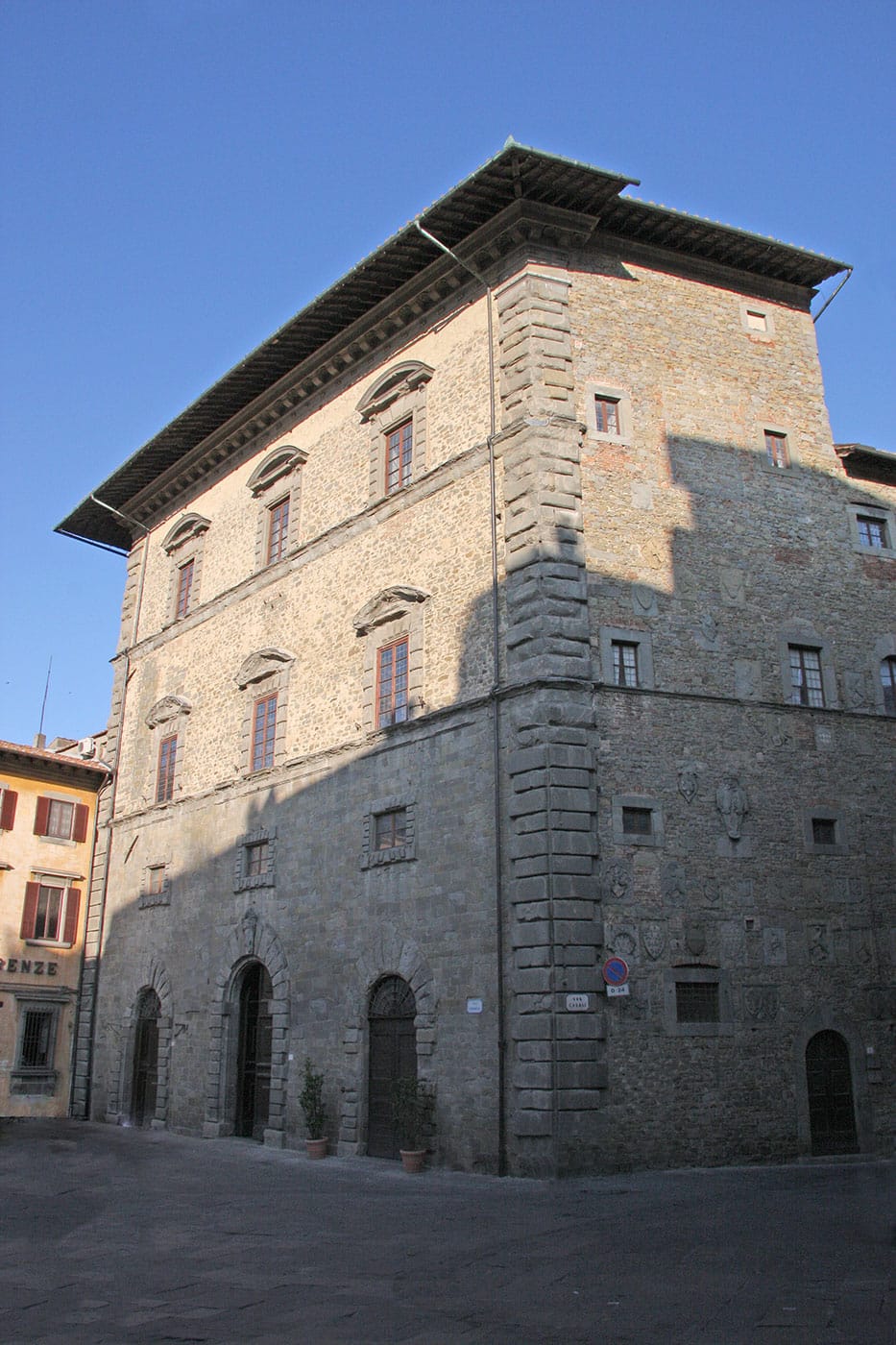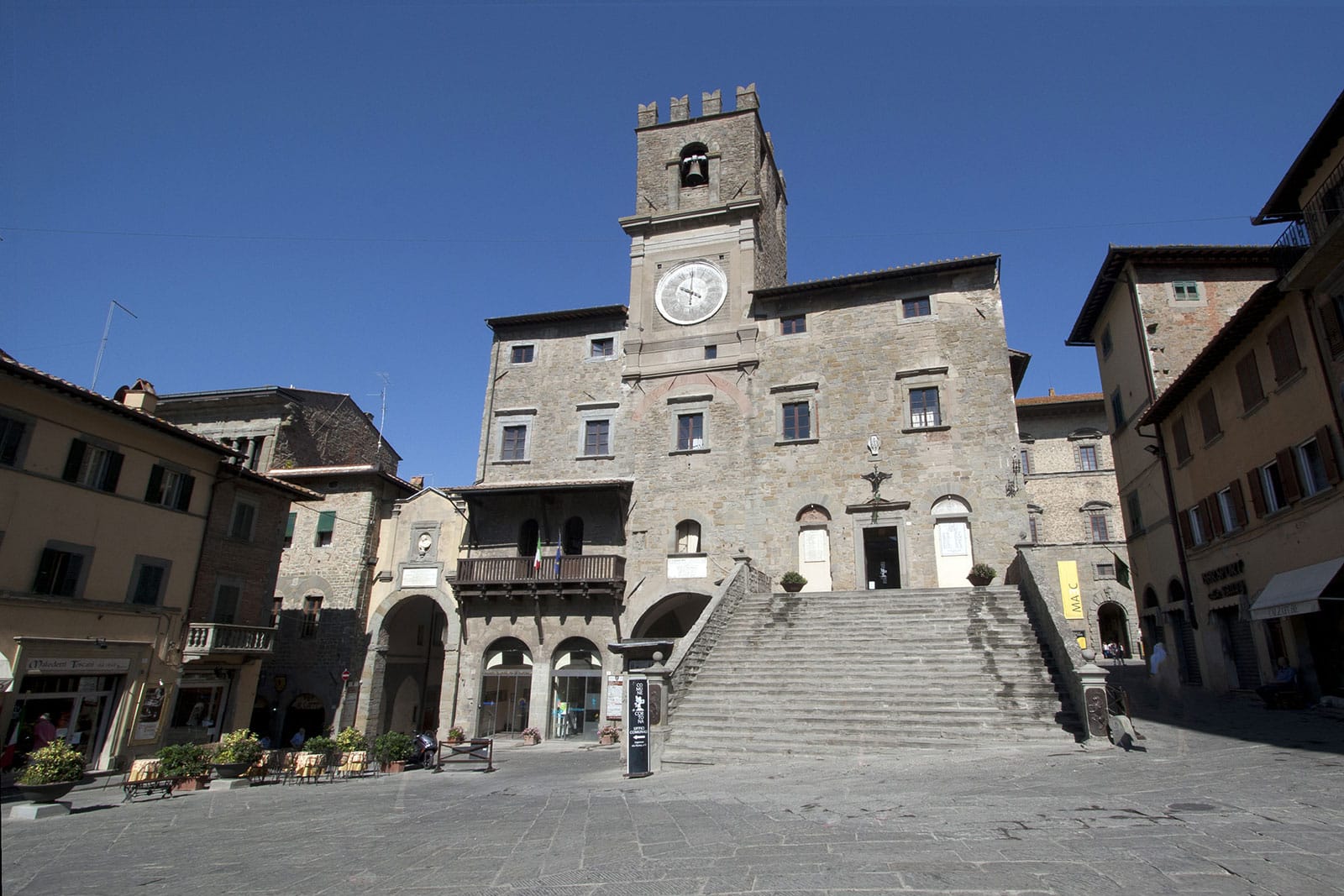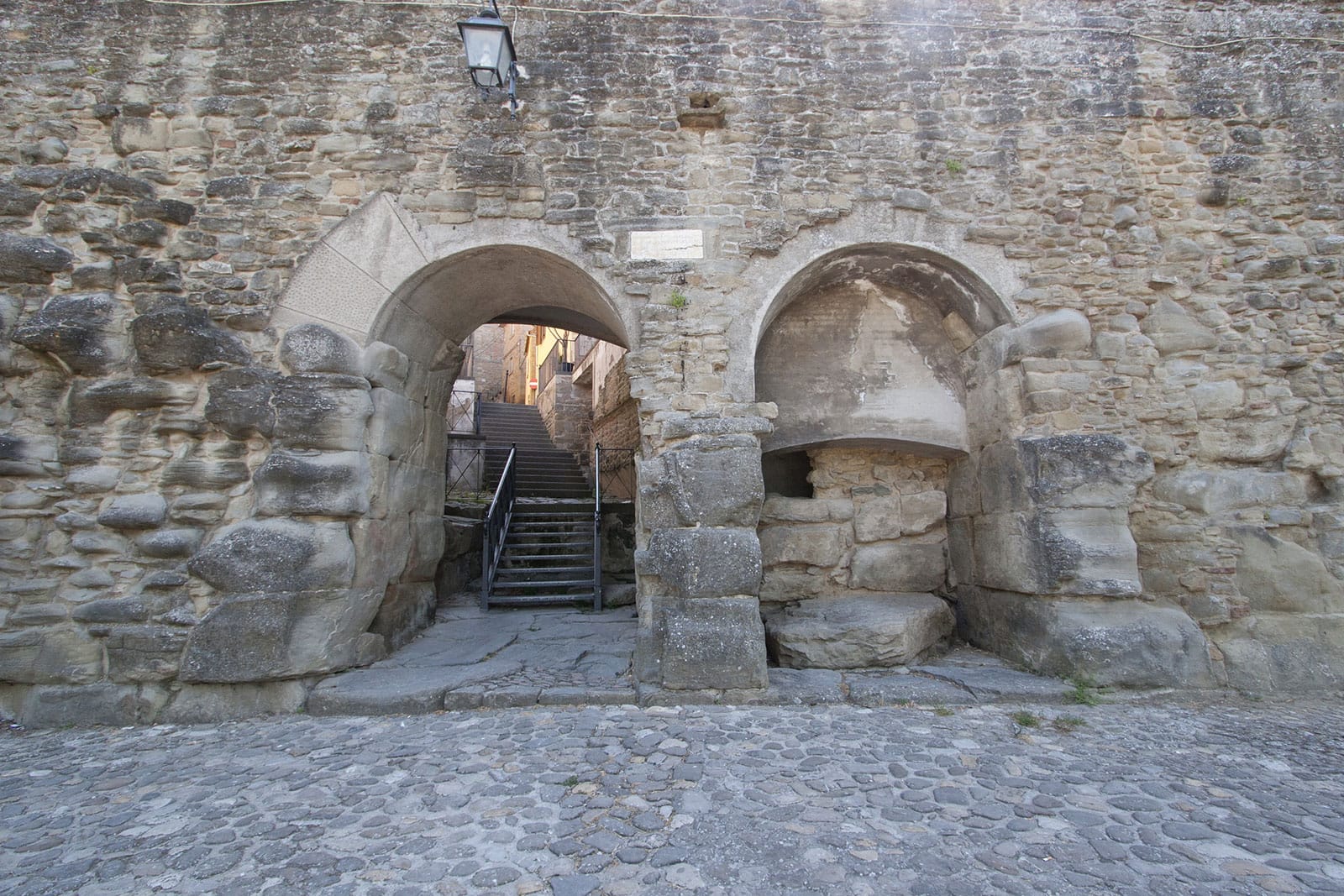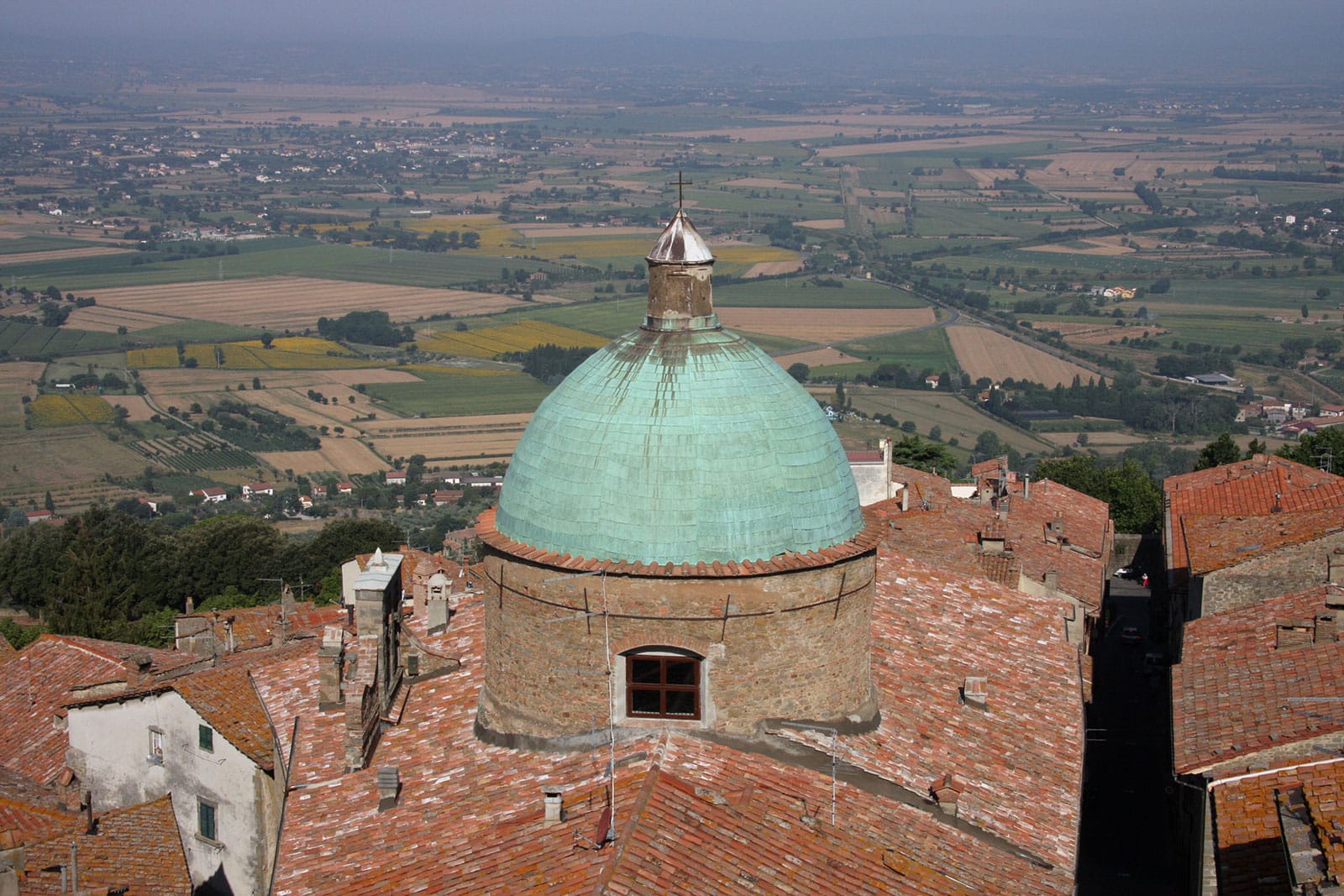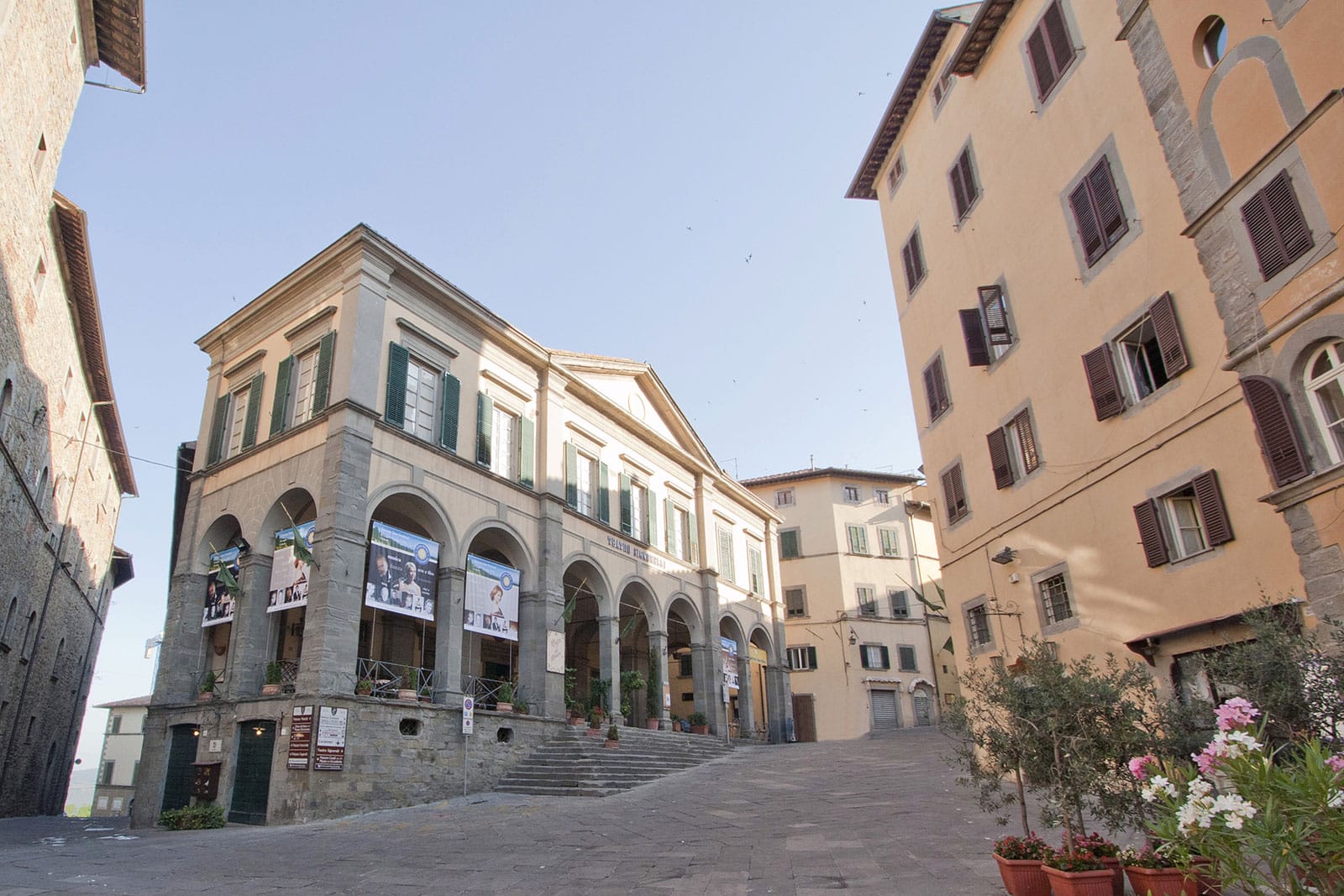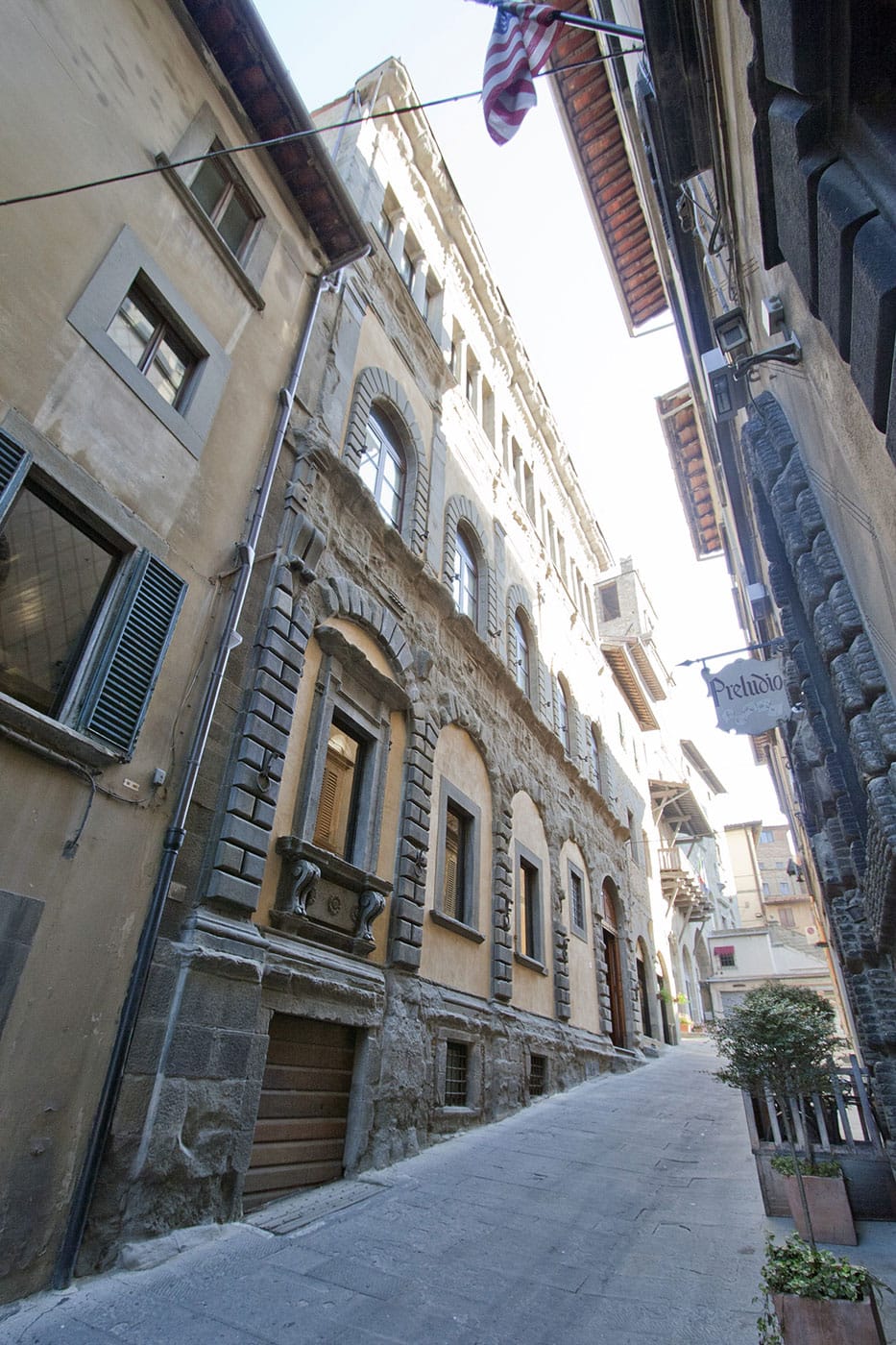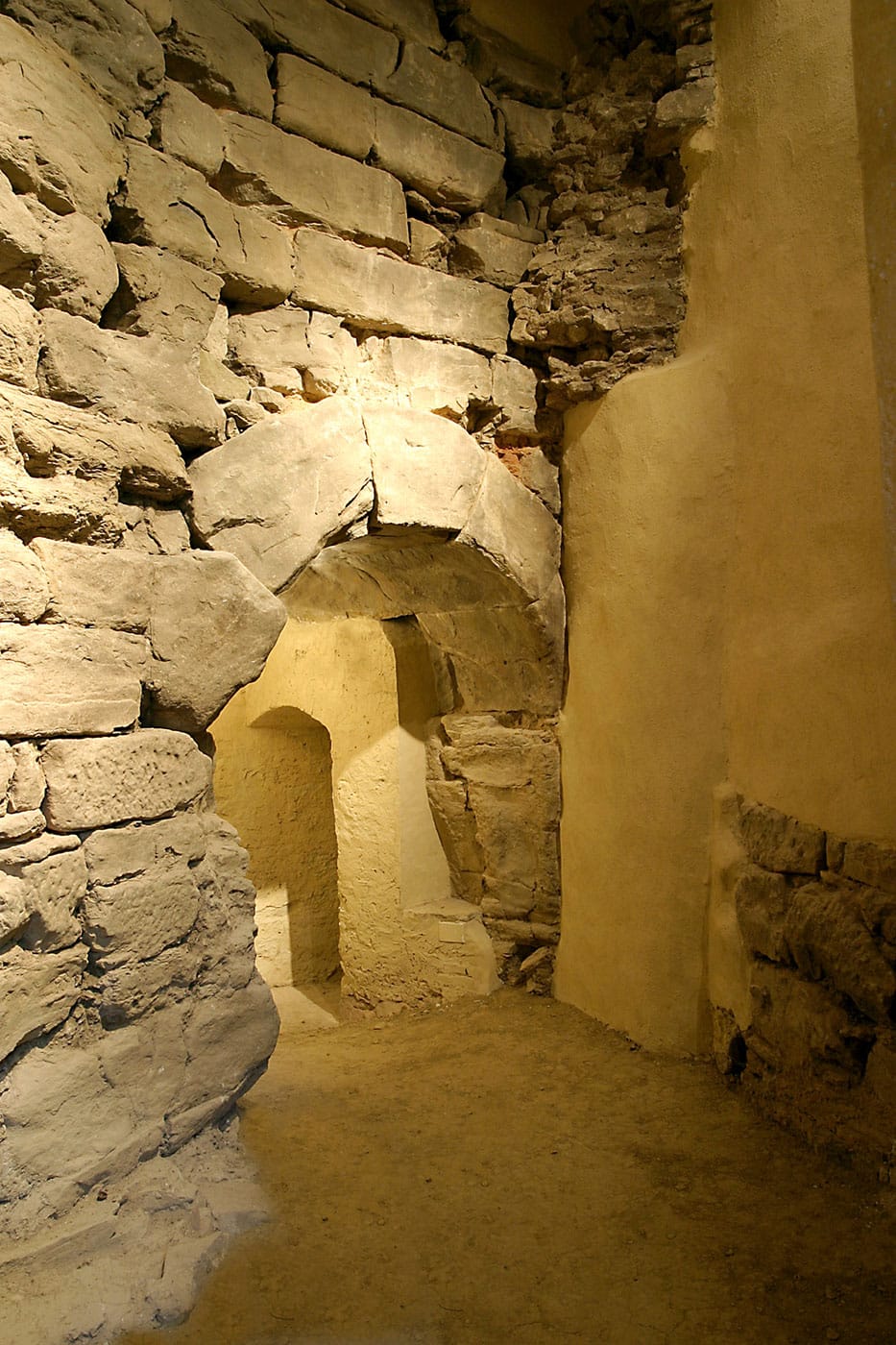Tour in the historical center
The tour in the historical center of Cortona will guide you throughout its historical heart, making you discover the most important historical and artistic beauties of the city, the museums, the city walls and the palaces, in a fascinating tour that will bring you back in time. This itinerary is not particularly difficult and is suitable for the whole family.
- The itinerary in the historical center starts from Piazza della Repubblica, the main square where the “cardo” and the “decumano”, respectively the North-South and the East-West streets of the Roman city of Cortona, formerly met. At this crossroads there was the Forum, that is the main square of the Roman age.
- Two palaces overlook Piazza della Repubblica: the Palazzo del Capitano del Popolo (14th century), the magnificent residence of cardinal Passerini during the 16th century, where today you can find the post office on the ground floor, and the Palazzo Comunale (Town Hall). The latter, dating back to the 12th century, was originally made up of a single big room for council meetings aimed at solving political, cultural and religious issues. The palace was extended on the left hand side in the 16th century with the construction of the bell tower and of the massive access staircase to the palace.
- From Piazza della Repubblica you can enter Piazza Signorelli, where you cannot miss visiting Palazzo Casali (16th century), which has always been considered the palace of culture and is today the seat of the beautiful Museum of the Etruscan Academy and the City of Cortona (MAEC), of the Etruscan Academy and of the Public Library.
- The wonderful Theater Signorelli (19th century) rises majestically on the right hand side of Palazzo Casali. This theater in Neoclassical style is enriched with a loggia made up of seven arcades.
- If you continue along via Casali, you will get to piazza del Duomo, where you can visit the Church of Santa Maria Assunta, the Cathedral (15th century), designed by Cristofanello and Laparelli. It preserves some canvases by Berrettini and by the school of Signorelli, as well as the tombs of the Venuti brothers, who were the founders of the Etruscan Academy.
- In front of the Cathedral, where there once was the Church of Gesù, you will see the Diocesan Museum, which is made up of works of art coming from the churches of the city. In particular, you cannot miss the “Christ carrying the Cross” and the “Painted Cross” by Lorenzetti, the ”Annunciation” by Fra Angelico and the “Mourning over the Dead Christ” by Luca Signorelli. In addition to that, some vestments belonging to cardinal Silvio Passerini as well as chalices and reliquaries are displayed in the museum.
- Walking down via del Gesù, you will get to via Iannelli, famous for some medieval houses that are perfectly preserved. The facades jutting out onto the street and reinforced by wooden beams are very impressive. It is possible to see traces of the old Etruscan and Roman houses on the foundations of these houses.
- Leave the city center behind through Porta Santa Maria and walk along the old Etruscan city walls on the left. They were built in the 5th century B.C. and were then strengthened by the Romans and by several restorations during the Medieval and the Modern periods. The West side is perfectly preserved and is characterized by the only two-opening Etruscan gateway, Porta Bifora (2nd century B.C.). The beautiful internal paving of the storm door shows the ceremonial character of this gateway, which was the departure point of the way leading to the main Hellenistic necropolis of the city.
- Continue walking along the city walls and enter the city through Porta Sant’Agostino. You will find in front of you an Arch and a room covered with a barrel vault and with an opening in the center of the ceiling, which was probably used in the past as a storage tank or a warehouse. This Arch seems to date back between the 2nd and the 1st century B.C.
- Walking up via Guelfa, you will see on your left the Church of Sant’Agostino, deconsecrated today and used for exhibitions and concerts, whose most interesting part is the cloister of Sant’Agostino, where you can admire the saint’s life painted on the walls.
- From here continue going up and you will see on your right the magnificent Palazzo Baldelli (15th century), seat of Hotel San Michele, and on your left the beautiful facade made of decorated stone of Palazzo Cristofanello Laparelli, seat of the Banca Popolare di Cortona. Via Guelfa leads you directly to Piazza della Repubblica, the end of our itinerary.
